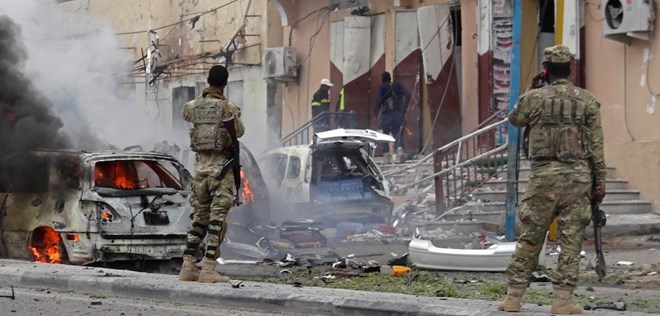
Friday October 6, 2017
By Emma Wabuke
Somalia offered a deal to al-Shabab fighters willing to lay down their arms. Here’s why it didn’t work.
In early April, Somali President Mohamed Abdullahi Mohamed issued a 60-day amnesty for al-Shabab fighters willing to lay down their arms. To help complete the deal, the U.S. government even removed a bounty of $5 million on one of the group’s founding members, Mukhtar Robow, who is also known as Abu Mansoor. The agreement had mixed results. Some 50 fighters, including high-level individuals, surrendered to the Somali government. But the al-Shabab leadership retaliated by organizing assassination attempts of nominated political delegates and conducting sustained attacks on soldiers and civilians in Somalia’s Puntland and Kenya’s Boni Forest regions.
The Somali government may have been surprised at this outcome, but the problems were entirely predictable. The history and legal applicability of amnesty proposals reveals the conditions under which they are most likely to succeed — or to fail.
For better or for worse, amnesty laws have long been considered an integral part of transitional justice processes in post-conflict states. They were popularized in political transitions in Latin America in the 1980s, and they have been implemented around the world, including in South Africa, Peru, El Salvador, and, most recently, Colombia. The essential idea in all these instances was that participants in armed conflict would be shielded from criminal liability if they participated in truth and reconciliation commissions.
In the 1990s, however, the “peace over justice” rationale began to be challenged as victims chose to bypass national processes in favor of seeking redress through international justice mechanisms, including criminal tribunals and human rights bodies.
These norms were developed against a backdrop of armed conflicts that involved nation-states and an organized armed group within the state’s territory. In such instances, it is easy to grant amnesty (qualified or otherwise) as there is a specific recipient (such as the FARC rebels in Colombia) and a specific scope of application (such as the territory of Colombia).
The lines are less clear in more recent wars, in which armed conflict spills into the territory of another state, as has happened with the fighting in Somalia. Although al-Shabab’s origins are rooted in the civil war that followed the fall of longtime military leader-turned-president Siad Barre, the group went on to conduct attacks in neighboring Uganda and Kenya. This development effectively expanded Somalia’s conflict to the region, and al-Shabab became a transnational group.
So what effect does an amnesty deal then have on third states? Let’s say an al-Shabab fighter who surrenders his guns and is granted amnesty by the Somali government later crosses into Kenya. Is there a compelling reason for Kenyan authorities to honor the Somali amnesty deal? If they don’t, consider how this agreement could actually be at odds with its objective of restoring peace. Would-be defectors might be wary of surrendering for fear of reprisals in another territory. This dynamic is aggravated by multiple states’ reluctance to issue amnesties to terrorist groups; many cite the U.S. position of not negotiating with terrorists.
Another notable component of the Somali amnesty proposal is marked by an absence: its omission of deradicalization. Efforts to stop or reverse the radicalization of individuals have taken many forms, including restoration of social ties and religious debates with authorities. The efforts seek to build trust and focus on an individual’s vulnerabilities to help shift them away from radicalizing influences.
But the Somali deal does not provide for deradicalizing efforts. Instead, the transition from militancy to civilian life seems to end with surrender. Such an approach deals with the symptom but not the disease. If there is not a comprehensive strategy to deradicalize fighters who have surrendered, they may not abandon the ideology, which leaves them open to future radicalization that also poses a broader threat. Whatever peace develops from this limited amnesty would be shaky at best.
The Somali amnesty proposal is part of a long-standing approach that the country’s governments have taken to quell hostilities. This deal, like others that preceded it, was announced alongside a promise by the government to use force with those who rejected the offer. If the shortcomings in the dynamic it creates are not addressed, however, the quest for peace in Somalia and the surrounding region is unlikely to succeed.